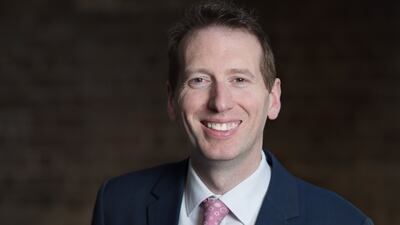Every business wants to reduce their energy bills, but they often run into problems if the solution requires relatively high levels of capital investment. The energy savings may be clear, but the money just isn’t there to fund their delivery.
This is where ESB’s Smart Energy Services and its range of innovative funding solutions come in. The tailored funding solutions offered allows organisations to improve energy efficiency with minimal financial investment, realising energy cost savings and reduced carbon emissions. The risk of implementing these energy efficient technologies is greatly reduced as ESB assumes the responsibilities of management, maintenance and ownership of the solution.
"As a business unit within ESB, we have been in operating for almost three years," says Michael Mahon, head of ESB's Smart Energy Services. "At the outset, customers were asking us why an electricity generating company was interested in helping them use less electricity," Mahon notes. "Business now understand the benefits of reducing emissions for both ESB and their own organisation. However, while people want to reduce costs they either don't want to invest the capital required to do it preferring to focus their budget on areas that directly affect the profit of their business or they simply can't afford it. ESB is willing to fund the investment costs on the basis that it gives benefit to both the customer and our own organisation. We fund projects over four, six or even up to 10 years in some cases and share the benefits of the energy savings with the customer."

Funded models include lighting as a service (LAAS) where ESB pays the upfront cost of replacing traditional lighting with more energy efficient LED fixtures. “We maintain the lighting upkeep and share the cost savings with the customer for a defined period,” explains Mahon.
Under other funding solutions such as an Energy Partnership Agreement, ESB installs solutions like a heat pump or combined heat and power (CHP) solution, operate and maintain the plant and supply the heat and electricity at a discounted rate. Similar to LAAS, the customer then shares a percentage of their energy savings over an agreed contract period with ESB. “The benefit of funded models like this is that no customer capital investment or drain on cash flow is involved,” Mahon adds.
One customer that has benefited from this approach is Coral Leisure, one of the largest leisure management companies in Ireland. The company wanted to reduce its energy usage and costs as well as its carbon emissions. ESB’s Smart Energy Services implemented high-tech, energy-efficient LED lighting retrofits across all facilities, installed swimming pool covers, de-stratification fans and improved heat controls.
“One of the main reasons Coral Leisure partnered with us was due to the fact that we offered financial support as well as procurement and project management,” says Mahon. “They simply did not have the internal cash flow to implement a project of this size. ESB’s Smart Energy Services were able to provide the upfront capital in order for Coral Leisure to make immediate energy savings.”
The process ESB follows with large businesses starts with an initial consultation. “We have a conversation about how much energy the company normally uses and we usually have an idea of how much we can help them save,” he explains. “That’s normally in the 10 to 40 per cent range. We explain the concept, the background, and the funding options.”
Ongoing monitoring is a key part of the offering to ensure savings are maintained
The service then proceeds with an energy audit. “We go in for a few days and look at the organisation’s work patterns and energy uses and come up with energy saving recommendations. That might start with a very simple one to change to LEDs for lighting. As part of this engagement we also offer expert advice across all of the different types of grants available from bodies such as the SEAI like the ACA, Triple E, Exceed and Project assistance grants and other funding options available to businesses undertaking energy efficiency projects. This includes a range of energy services which can be offered in lieu of energy credits for large businesses under the SEAI Energy Efficiency Obligation Scheme.
“Our engagement with large businesses can last much longer in more complex cases. We have deployed engineers for periods of up to a year,” says Mahon. “They look at all the processes and activities in the organisation and identify energy efficiency projects that offer benefits for us and the customer.”
Michael believes a huge number of companies in Ireland can avail of significant benefits from funded energy efficiency projects. “It often starts with lighting and can move all the way up to combined heat and power plants (CHPs),” he says. “Ongoing monitoring is a key part of the offering to ensure the savings are maintained.
“All of this helps reduce emissions and contributes to Ireland’s climate change target. It is part of our Brighter Future strategy which is aimed at helping Ireland achieve its decarbonisation goals.”











